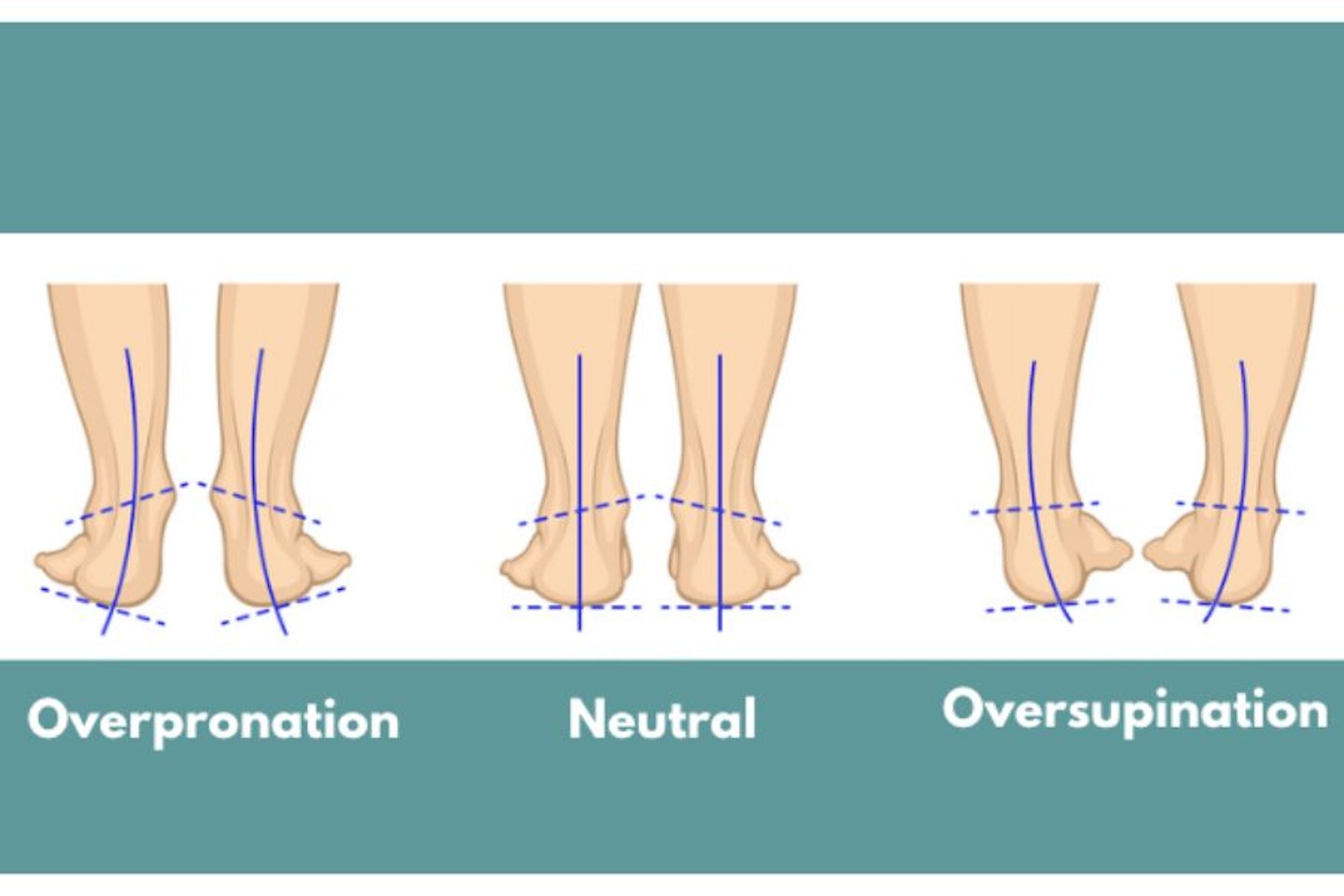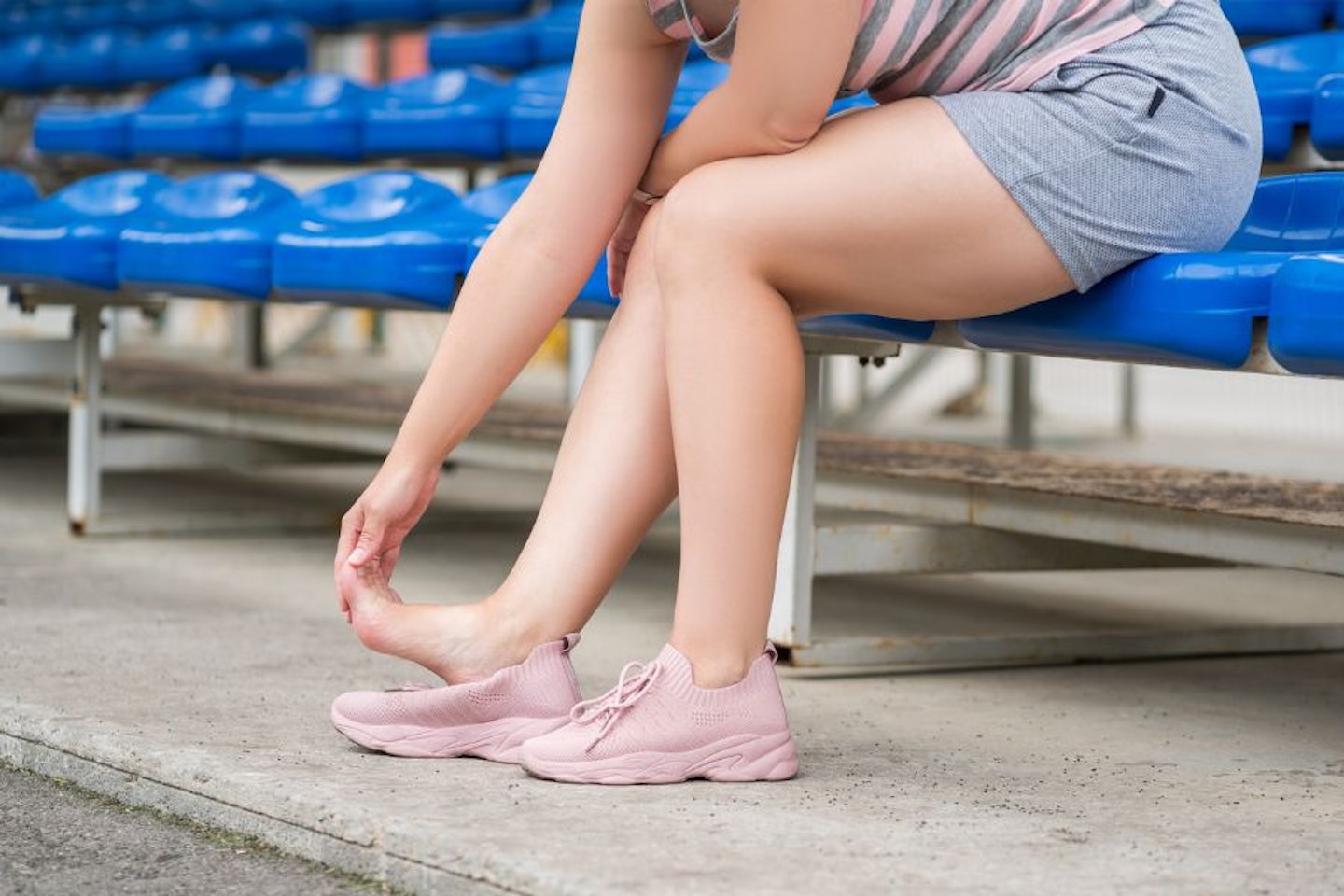When speaking about foot mechanics, there's some jargon you should know, including overpronation and underpronation. While exercising, whether that be walking, running or playing a team sport, your ankles and feet tend to roll inward. This is called 'pronation.' If your feet roll too much or too little, maybe because of ill-fitting gym trainers, slouched posture or foot structure, it can lead to a whole host of foot problems and annoying pain.
So, how do you avoid this? The answer could lie in choosing the right shoes for your foot alignment. The right shoe will also be right for your pronation, and won't add to any foot pain you might feel.
What is pronation?
Trevor Prior – practising podiatric surgeon and one of Vionic's Innovation Lab members – explains the what pronation actually is and the different types of pronators.
"Pronation is a movement of the foot which occurs naturally in everyone. It refers to how the foot moves from side to side as we walk or run. It happens as the weight transfers from the heel to the ball of the foot as a person moves," Trevor says.
Every time you take a step your foot naturally rolls slightly inward to distribute the impact evenly across your foot, ankle and lower leg. This pronation helps absorb shock and adapt to various surfaces, resulting in an efficient and comfortable stride.
"The joints of our body move in three different body planes and the amount and direction varies greatly between individuals," Trevor adds. "As a result, people pronate in different ways." And, it's key to decipher your pronation, bearing in mind that there are three different types: neutral, overpronators and underpronators (supinator).
"Some will see lowering of the arch, others will see the back of the heel turn outwards and others may see the toes splay outwards." It varies, according to Trevor, "in some people, they only see one of these signs to varying levels (i.e. different arch heights) and others may see a combination of all of these signs."

Neutral pronation
Neutral pronation is like a well-oiled machine, keeping your feet aligned and your movements fluid without straining any part of your foot. After all, it's the foundation of a balanced gait.
Overpronation
"Some degree of pronation is not necessarily a bad thing," Trevor says. But, overpronation is when the foot rolls in excessively upon landing, transferring the weight to the inner edge rather than the ball of the foot, causing strain on the arch and the ankle. In fact, individuals who suffer with this condition "may experience an inward rotation of the knee and forward tilting of the pelvis," he says. This can result in "pain in the feet, knees, hips, back, shoulders and neck."
Underpronation (supination)
The opposite to overpronation is underpronation (or supination) "in which the foot moves in the opposite direction and tends to have a higher arch, with the heel turned inwards and the toes pointing towards the other foot," Trevor comments. This tends to occur when the foot rolls very little or not at all and leads to increased stress through the lower leg.
How do I choose a shoe for pronation?
Choosing a gym shoe (whether that be HIIT, yoga or running) with the perfect fit for your pronation isn't hard - when you know how. For overpronators, stability or motion control shoes that have reinforced arch support and firm midsoles are the best for proper alignment and injury prevention. Meanwhile, underpronators should gravitate towards shoes with maximum cushioning and flexibility to absorb impact and provide a smoother transition from heel to toe.
Seek expert help
If you are particularly worried about the way you walk, or run, or you're in pain, it's a good idea to seek expert help. Trevor notes that: "your podiatrist will be able to confirm your symptoms and will be able to give you advice on how to manage the factors that contribute to your pronation."
Insoles
Adding supportive insoles to your shoes may help to minimise the force and impact on your feet, as well as the rest of your body. You're best to opt for "a thicker overall sole is best and preferable to a flat one," he says. This is because "it’s about reducing the force caused by pronation and therefore stress to the foot (rolling inward)."
Orthotic shoes
"Orthotic shoes are designed to provide support and reduce the consequences of pronation, especially for activities such as running or walking," Trevor says. "When looking for supportive footwear to help with pronation, you should choose shoes that offer extra support and stability to minimise the impact of each step."
Unlike other pronation-prevention measures that could be more extreme, "wearing orthotic shoes or insoles is an easy, effective method of naturally reducing stress on the foot," he says.
How do I know if my shoe fits correctly?
Knowing if you're shoe fits correctly can be difficult. Especially if you've always been a certain size so you've just continually purchased the same size for years and years. But, with "as many as 90% of people wearing the wrong size footwear" according to Trevor, it's important that your shoes fit as best they can.
"When shoes are too small, straps can dig into your feet and you might end up with a stubbed toe, an ingrown toenail or another painful condition," he says.
However, "while it may be better to size up, shoes that are too big also present their own list of foot problems." For example, like sliding off your feet, rubbing, or "your feet can slip around in the shoe, which can strain your ankles and calves and impact your posture."
So long as your toes have just enough space to wriggle comfortably, your arches feel protected in the midfoot (particularly if you suffer with flat feet), and the heel makes sure that your foot remains perfectly in place, your foot will be just fine.

How do I find shoes that fit?
Measuring your feet might be something you haven't done since you went to get a new pair of school shoes, but it's a fail-safe way to finding shoes that fit. "If you’ve measured your feet in the past or think you know your shoe size, I still suggest measuring every so often, as our size may change," Trevor says. "This includes improper shoe length and width, so measuring both is crucial."
Additionally, you don't have to whip out a shoe-fitter device, you can simply just use a ruler or measuring tape. Beware though, it's better to measure your feet in the evening. "This is because feet tend to expand throughout the day, which can often result in different measurements at night than in the morning," he says.
Armed with this key knowledge on the pronation of feet, make sure you select your gym trainers with care and consideration. Be it the sturdy support of shoes for overpronators, or the cushioned comfort for underpronators.
About the expert
This article contains expert advice from Trevor Prior. He's a podiatric surgeon and one of Vionic's Innovation Lab members. With over 25 years of experience under his belt, Trevor specialises in sports injuries, biomechanics, gait analysis, orthoses and foot surgery and has worked with elite and professional athletes. He's had extensive training in the UK, US and Europe and is a member of a number of professional groups including the British Association of Sport and Exercise Medicine. In addition to this, Trevor consults as a podiatric surgeon at Homerton University in London and is the director of Premier Podiatry.
Gemma Lavers is a Health & Fitness Writer for What's The Best. From understanding nutrition to practising yoga and Pilates to delving into the psychology of motivation. She enjoys demystifying the latest fitness trends and staying on top of the dynamic health landscape, whether that's the best gym leggings, fitness trackers or the benefits of yoga.
When Gemma’s not writing, she can be found attending Pilates, yoga and Zumba classes. She’s also a bit of a home workout aficionado, constantly trying out new ways to keep her moving at home. Between writing, exercising and shopping, there’s nothing she loves more than hopping on a plane and exploring new cultures.
Subscribe to the What’s The Best Newsletter to keep up to date with more of the latest reviews and recommendations from the rest of the What’s The Best team.
